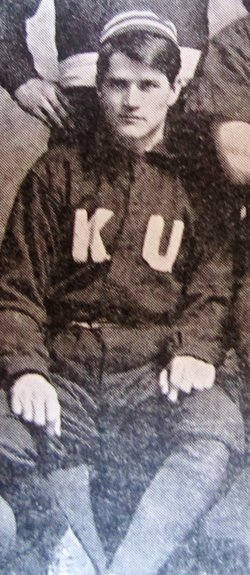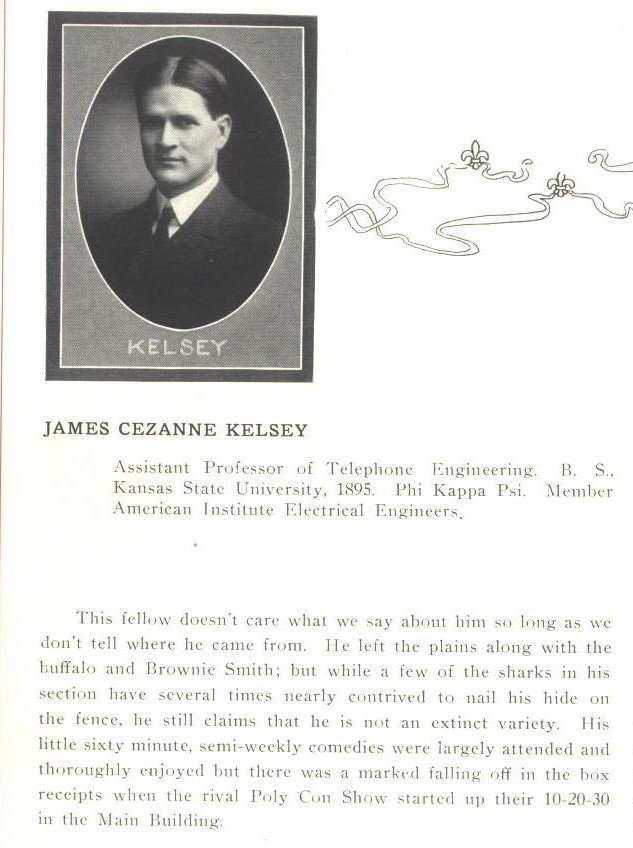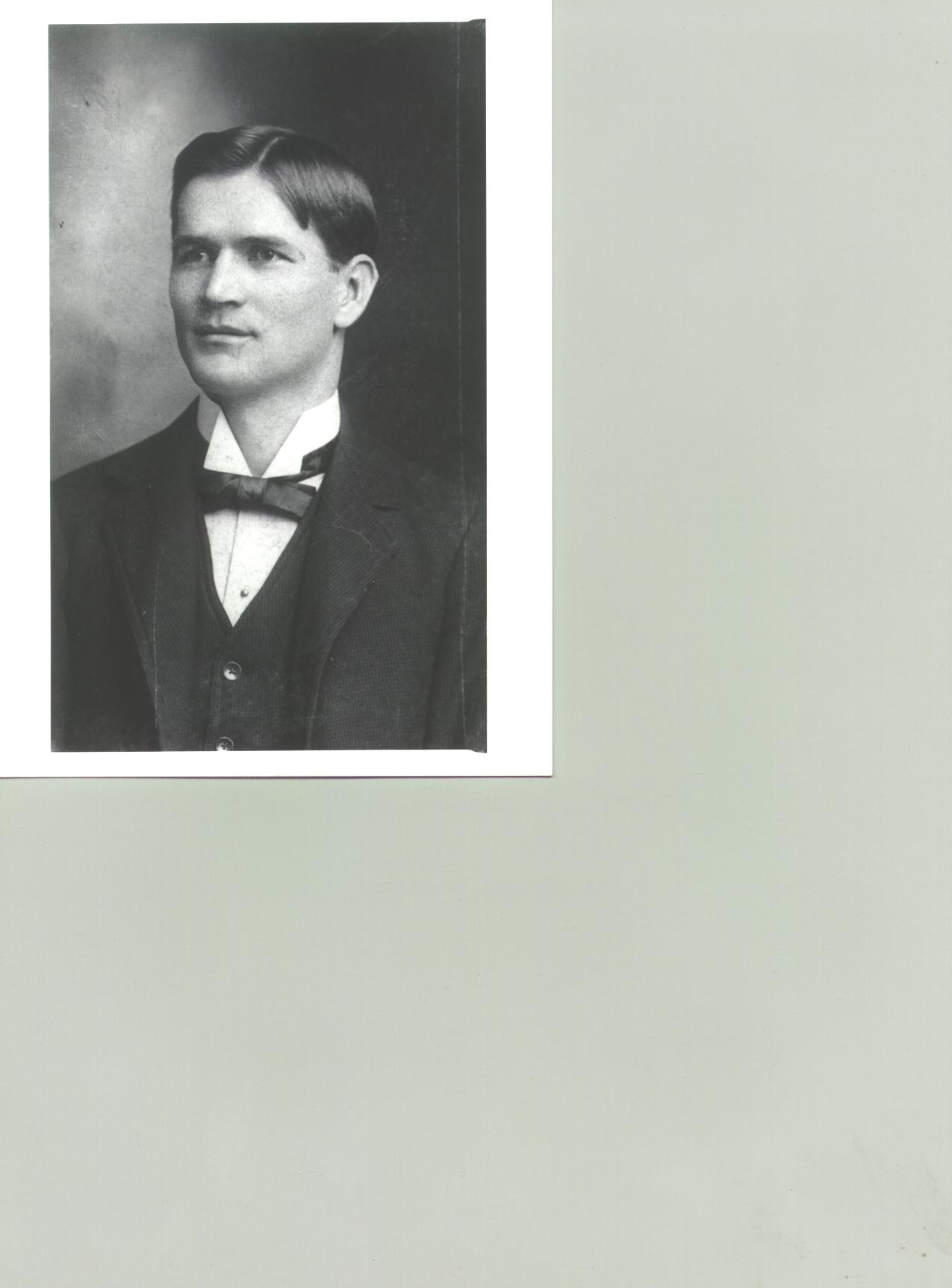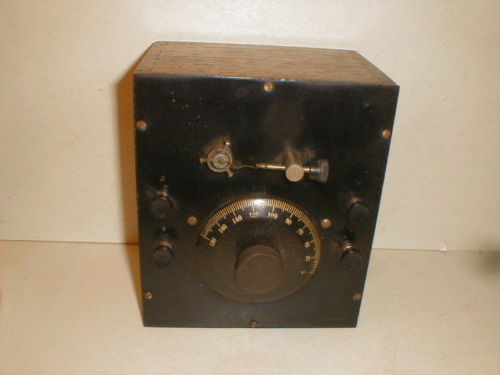James graduated from the Hiawatha schools and attended the University of Kansas at Lawrence from 1891 to 1895. There he studied electrical engineering and telephony. He was a star player on the university baseball team, famous as a catcher. He married Anna Gosline Edwards, also a KU graduate, Arts'96, in 1900.
By 1903 he was a consulting telephone engineer and assistant professor of telephone engineering at Purdue University and was considered an expert in patent matters for telephone manufacturing companies. He was the author of "Evolution of Circuit Design" which ran through the American Telephone Journal for 1903. He began writing a weekly essay for Telephony in 1910 where he was Financial Editor.
In 1906 Kelsey gave up his position as professor at Purdue to become sales manager of the Kellogg Switchboard and Supply Company of Chicago. He remained at Kellogg as sales manager until 1914. He had become nationally known as an expert on telephone systems service, maintanence, operating, etc., and he was employed in many of the largest cities of the United States at a salary of $100.00 a day. In 1921 he was called by the Kansas City Chamber of Commerce to testify before the public service commission of Missouri as to a fair valuation of the companys property.
Sometime in 1919 or 1920 James Kelsey and a business partner named Guy Albert Joy began building crystal radio sets. They called their new company the Joy-Kelsey Corporation, Manufacturers of Radio Equipment. The address of their company was 4021 West Kinzie Street, Chicago, Illinois. One of their products was a "Skeezix Radio Toy" that had Skeezix comic characters appearing on the side of a colorful can-type radio case. It's said that they were successful in their work. Mr. Joy much later went on to found the Oxford Radio Corporation.
Kelsey's death came as a great shock to his many friends and relatives. He died of pneumonia in Chicagos' Columbus Hospital, December 8, 1922, on a late Friday afternoon.
He had been seriously ill for only a few days. His body was brought back to Hiawatha for burial. Many fine tributes were paid to him. The University of Kansas Graduate Magazine noted "One of the saddest announcements that the Graduate Magazine has made in many a day is that of the death of James Cezanne Kelsey, e'95, at his home in Chicago. "Jimmy" Kelsey was one of the most popular men the Hill ever knew, and deservedly so. Not in athletic circles alone, where he made a name that is readily associated with the college baseball of that day, but in the University at large. He was an influence, even after he left his Alma Mater, and no Kansas gathering in Chicago was counted complete without Jimmy Kelsey."
The Hiawatha paper read "One of his splendid traits of character that always stood out every time he returned to Hiawatha was that he remembered faces and names, always called given names of old citizens, who loved him for his friendliness, kindly ways. Old and young welcomed him, all proud that Hiawatha gave to the world a man of his talent and ability."
James graduated from the Hiawatha schools and attended the University of Kansas at Lawrence from 1891 to 1895. There he studied electrical engineering and telephony. He was a star player on the university baseball team, famous as a catcher. He married Anna Gosline Edwards, also a KU graduate, Arts'96, in 1900.
By 1903 he was a consulting telephone engineer and assistant professor of telephone engineering at Purdue University and was considered an expert in patent matters for telephone manufacturing companies. He was the author of "Evolution of Circuit Design" which ran through the American Telephone Journal for 1903. He began writing a weekly essay for Telephony in 1910 where he was Financial Editor.
In 1906 Kelsey gave up his position as professor at Purdue to become sales manager of the Kellogg Switchboard and Supply Company of Chicago. He remained at Kellogg as sales manager until 1914. He had become nationally known as an expert on telephone systems service, maintanence, operating, etc., and he was employed in many of the largest cities of the United States at a salary of $100.00 a day. In 1921 he was called by the Kansas City Chamber of Commerce to testify before the public service commission of Missouri as to a fair valuation of the companys property.
Sometime in 1919 or 1920 James Kelsey and a business partner named Guy Albert Joy began building crystal radio sets. They called their new company the Joy-Kelsey Corporation, Manufacturers of Radio Equipment. The address of their company was 4021 West Kinzie Street, Chicago, Illinois. One of their products was a "Skeezix Radio Toy" that had Skeezix comic characters appearing on the side of a colorful can-type radio case. It's said that they were successful in their work. Mr. Joy much later went on to found the Oxford Radio Corporation.
Kelsey's death came as a great shock to his many friends and relatives. He died of pneumonia in Chicagos' Columbus Hospital, December 8, 1922, on a late Friday afternoon.
He had been seriously ill for only a few days. His body was brought back to Hiawatha for burial. Many fine tributes were paid to him. The University of Kansas Graduate Magazine noted "One of the saddest announcements that the Graduate Magazine has made in many a day is that of the death of James Cezanne Kelsey, e'95, at his home in Chicago. "Jimmy" Kelsey was one of the most popular men the Hill ever knew, and deservedly so. Not in athletic circles alone, where he made a name that is readily associated with the college baseball of that day, but in the University at large. He was an influence, even after he left his Alma Mater, and no Kansas gathering in Chicago was counted complete without Jimmy Kelsey."
The Hiawatha paper read "One of his splendid traits of character that always stood out every time he returned to Hiawatha was that he remembered faces and names, always called given names of old citizens, who loved him for his friendliness, kindly ways. Old and young welcomed him, all proud that Hiawatha gave to the world a man of his talent and ability."












